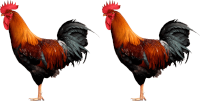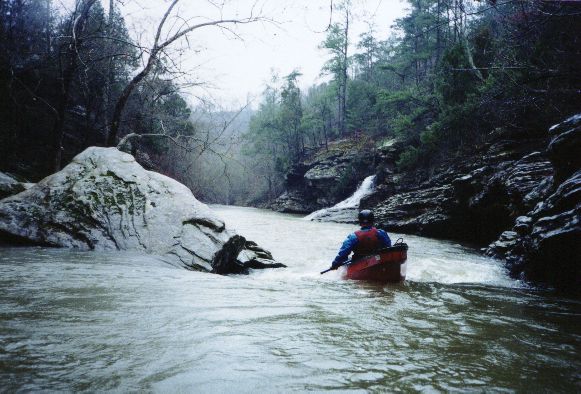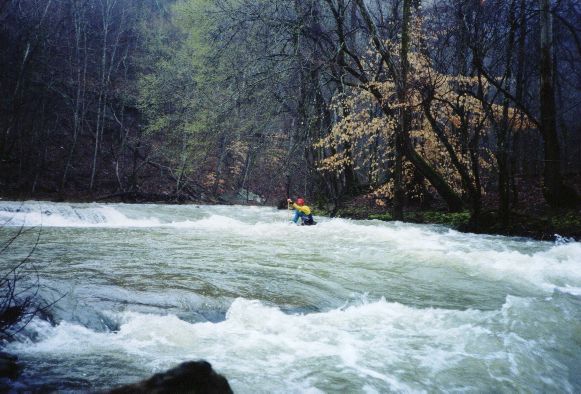Cahaba River Upper
-
RunCahaba River
-
ClassI/II
-
Put InUS 11
-
Take OutCR 10 (Roper Rd)
-
Length (mi)7
-
Gradient (fpm)~12'/mile
-
Watershed (mi2)20
-
Primary Gage
- Put-In Bridge 0'
-
Indicator Gage
Description
This is the upper run on the Cahaba and therefore requires some recent rain. There are indeed a lot of trees great and small across this stretch. We ran it at -2" and rising, and it was adequate but low. We had to walk once and limbo several times, and at decent levels several more trees would block the river. All the rapids are straightforard enough. Most of the gradient oocurs in two stretches before and after the footbridge. The rapids towards the end have a few nice play waves that will get much better at good levels. You will also encounter a high railroad trestle along the way.
Details
-
ClassI/II
-
Gradient (fpm)~12'/mile
-
Length (mi)7
-
Watershed Size (mi2)20
-
Put InUS 11
-
Take OutCR 10 (Roper Rd)
-
ShuttleUS 11/ CR 10
-
Water Quality
 (
2 chickens | 1 = Good, 3 = Gross)
(
2 chickens | 1 = Good, 3 = Gross)
-
Primary Gage
- Put-In Bridge 0'
-
Indicator Gage
-
Precip. Gage
Map
Trip Reports
Cahaba River, Upper
January 13, 2003
Written by Shane Hulsey
When I woke up and heard the rain beating down on the roof, my first impulse was to pull the covers back over my head and sleep the morning away. I thought I was in dreamland when I heard the raindrops running off the roof, tearing through the yard, and screaming down the streets. Suddenly it occurred to me that I wasn't dreaming at all! If it was raining this hard at my house, it was probably coming down in Trussville also, which can only mean one thing...Upper Cahaba whitewater!
After a nutritious breakfast of coffee and doughnuts, Randy and I headed for the put-in. The rain had stopped by this time, and the sun was starting to poke through the clouds. I craned my neck to look at the creeks and rivers every time we crossed a bridge, and to my delight everything seemed to be raging. The Upper Cahaba is fairly steep, and tends to run off quickly, so the best time to run it as just after a pretty good rain. Unfortunately, this is also the time at which the Cahaba is most polluted. Along with dirt and stormwater toxins from development close to the river, there is a chicken processing plant just upstream of the section we were about to run, and you just never know what might come floating down. But hey, sometimes you still have to take the road less traveled, right?
At the put-in, it looked like we had about 150 chocolate-milky cubic feet per second, which is a measure of how much water is passing through a particular place at any given time. We slid our boats into the small tributary, or feeder stream, of the Cahaba, and set off into the unknown. It was less than 50 yards before we encountered our first hazard, a river wide strainer. A strainer is anything obstructing the river that water can pass through, but you and your boat cannot. In this case, it was a logjam. We took the dry line through the poison ivy infested banks, and drifted onto the main Cahaba, where we had more than double the flow of water. The sunshine and perfect water level promised an incredible day.
It wasn't long before we encountered our first rapid, which I call Gas, Food, Lodging. If you get spanked here, it's probably time to take the exit ramp, shoulder your boat and head back to the comfort of your bed. If you style it, prepare yourself for the goods that lie downstream. At this level it had some perfect surfing waves, followed by a tight line between two holes (A "hole" is a river feature where water recirculates onto itself; They can be very fun or very dangerous) which you had to catch before spilling out into the Pool of No Return. From this pool you can see the river neck down between steep canyon walls. The next rapid is Coleman's Cornbread. This drop signals the beginning of the steepest, and perhaps one of the most beautiful sections on the entire river. Coleman's Cornbread has an easy lead-in, but then the entire river is funneled between a huge boulder, which is shaped like a wedge of Cornbread, and the limestone wall on the right side o! f the river. The whole slot is no wider than a boats' length, and it can really shuck your corn if you get caught in it! I ran first, and lost my angle and ended up bracing off the rock wall with my paddle. Randy came next with a better angle, and cleaned the drop, catching the eddy, or still water, behind the house sized boulder. Here you get the treat of seeing one of the most beautiful spots on the river. It is about 25 feet wide here, and is contained between sheer limestone canyon walls. A small tributary makes its final plunge into the Cahaba on the right bank, dropping a solid fifteen feet. This is a truly beautiful spot.
The river doesn't let up for the next two miles or so, and mostly consists of manageable class II shoal type rapids, which Randy and I ran with huge smiles on our faces. A few logjams and the entire body of an old car are a couple of the hazards in this section. Most of these drops are fairly straightforward, but there is, however, one exception...Spiral Stairs. This class III rapid is named for the series of ledges which go from right to left, and then quickly back right again. There are several tricky hydraulics and waves in here, and some pretty good boat handling is required to avoid the undercut limestone on the left bank. After scouting for several minutes, we decided to go for it. I peeled out of the eddy and sailed over the first ledge, then headed left, my boat pointed right to set up for the second ledge. I wanted enough angle to avoid going into the left bank, but not so much angle that I ended up sideways in the hole. I launched a sweet one off th! e second ledge, braced off a curling wave, and rode the tongue into the pool below. What a ride! Randy took a different, equally interesting line through Spiral Stairs, using the hydraulics to surf from one side of the river to the other. We had another nutritious meal of Snickers bars and water below Spiral Stairs, reflecting on the beauty and isolation of the canyon.
Below Spiral Stairs, the Cahaba mellows out again for a while, taking us by farms, an abandoned fishing shack, and a golf course. The water was already beginning to drop, so we booked it on down to the takeout. Dragging my boat up through knee-deep mud, I thought about the challenges we had faced and the good times we experienced. I wondered what sort of day I would have had if I had stayed in bed, and gone about my life in the regular routine. I realized once again that not all knowledge comes from books; sometimes you have to experience things firsthand to know them at all.


